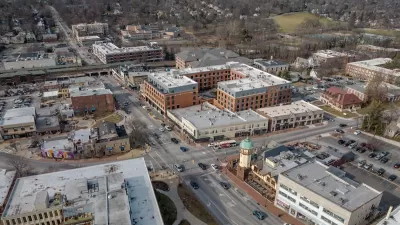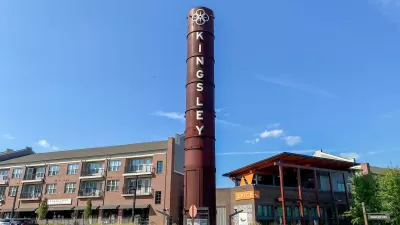With its surging job and population growth, and high retail sales, downtown Chicago is outperforming the suburbs for the first time in decades. Perhaps more than any other city in the country, it reflects the inversion of the post-war paradigm.

Greg Hinz describes how downtown Chicago, which is "adding residents faster than any other urban core in America," has become "the new economic engine of the metropolitan area and, increasingly, the rest of Illinois."
"The Chicago Loop long has been one of the world's greatest job centers, of course. For much of its history, though, downtown emptied out after office hours. And as the city aged and its population declined, the suburbs rose to become the preferred home to generations of young families and the tollways became employment corridors of their own."
"In recent years, those trends have reversed. After decades of watching the suburbs boom (often at the city's expense), Chicago now is outperforming the surrounding area by almost any measure—jobs, income, retail sales and residential property values, to name a few—despite the loss of 200,000 people in the 2010 census."
"If for decades after World War II we asked whether the area could prosper with rich suburbs but a dying inner city, the question now is whether the area can prosper with a thriving core but sinking neighborhoods and inner-ring suburbs around it."
FULL STORY: The hottest urban center in the U.S. — Chicago's mega-Loop

Manufactured Crisis: Losing the Nation’s Largest Source of Unsubsidized Affordable Housing
Manufactured housing communities have long been an affordable housing option for millions of people living in the U.S., but that affordability is disappearing rapidly. How did we get here?

Americans May Be Stuck — But Why?
Americans are moving a lot less than they once did, and that is a problem. While Yoni Applebaum, in his highly-publicized article Stuck, gets the reasons badly wrong, it's still important to ask: why are we moving so much less than before?

Research Shows More Roads = More Driving
A national study shows, once again, that increasing road supply induces additional vehicle travel, particularly over the long run.

Judge Halts Enforcement of Anti-Homeless Laws in Grants Pass
The Oregon city will be barred from enforcing two ordinances that prosecute unhoused residents until it increases capacity and accessibility at designated camping sites.

Advancing Sustainability in Los Angeles County Schools
The Los Angeles County Office of Education’s Green Schools Symposium brings together educators, students, and experts to advance sustainability in schools through innovative design, climate resilience strategies, and collaborative learning.

Using Old Oil and Gas Wells for Green Energy Storage
Penn State researchers have found that repurposing abandoned oil and gas wells for geothermal-assisted compressed-air energy storage can boost efficiency, reduce environmental risks, and support clean energy and job transitions.
Urban Design for Planners 1: Software Tools
This six-course series explores essential urban design concepts using open source software and equips planners with the tools they need to participate fully in the urban design process.
Planning for Universal Design
Learn the tools for implementing Universal Design in planning regulations.
City of Moreno Valley
Institute for Housing and Urban Development Studies (IHS)
City of Grandview
Harvard GSD Executive Education
NYU Wagner Graduate School of Public Service
City of Cambridge, Maryland
Newport County Development Council: Connect Greater Newport




























